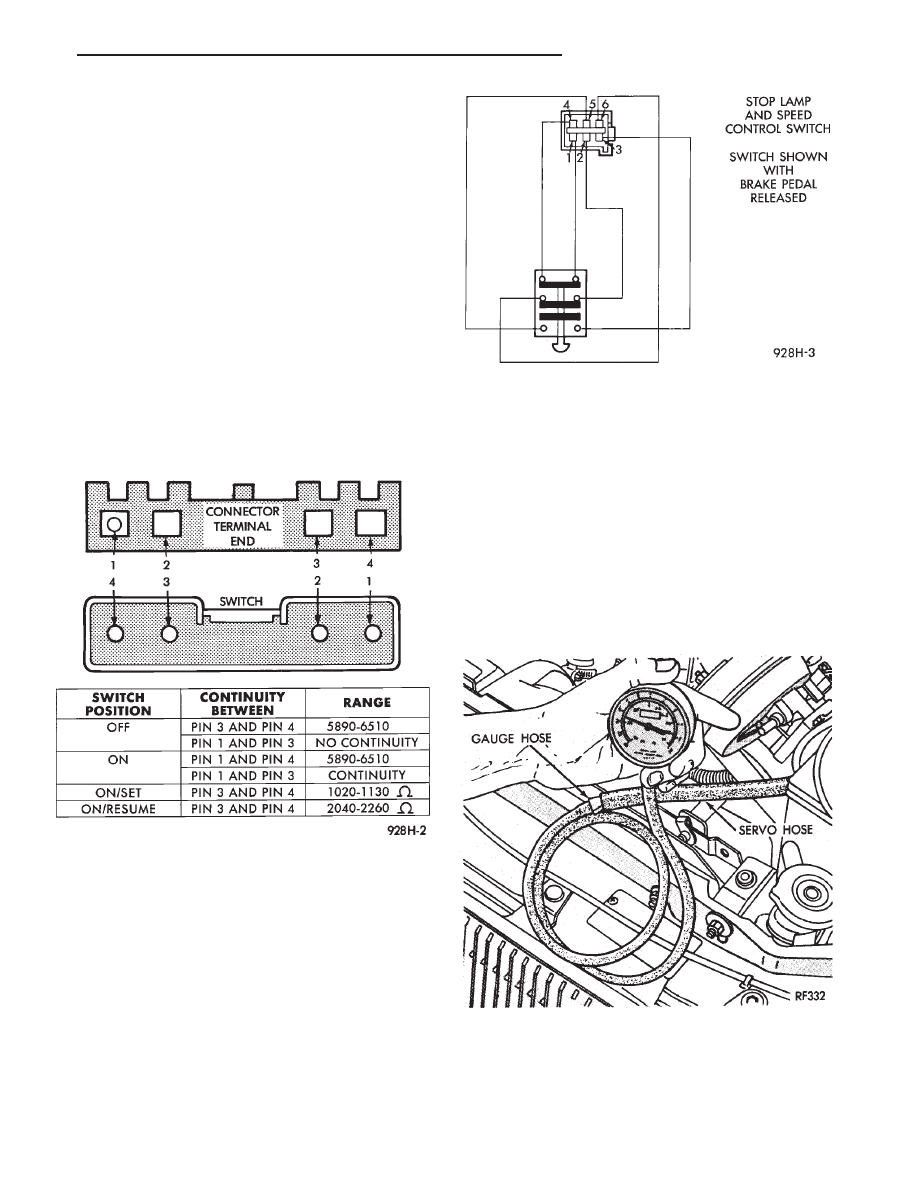Chrysler Town & Country/Voyager, Dodge Caravan, Plymouth Voyager. Manual - part 218

(c) If continuity, refer to Stop Lamp Switch Test.
(d) If stop lamp switch test OK, Test continuity
between pin 6 of stop lamp switch and ground.
(14) Using an ohmmeter, touch one lead to a good
body ground and touch the other lead to pin 30. The
meter should show no continuity when transmission is
in DRIVE and continuity when in PARK or NEUTRAL.
If not test Neutral Start and Back-Up switch using
DRB II.
SPEED CONTROL SWITCH TEST
WARNING: IF REMOVAL OF AIR BAG MODULE IS
NECESSARY, REFER TO GROUP 8M, RESTRAINT
SYSTEMS.
(1) Remove the switch and disconnect 4-way connec-
tor.
(2) Using an ohmmeter, test continuity at the four
pins of the speed control switch. Refer to Speed Control
Switch Continuity (Fig. 9).
(3) If there is no continuity or incorrect continuity at
any one of the switch positions, replace the switch.
STOP LAMP SPEED CONTROL SWITCH TEST
(1) Disconnect the six way connector at the stop
lamp switch (Fig. 10). Using an ohmmeter, continuity
may be checked at the switch side of the connector as
follows:
(a) With brake pedal released, there should be
continuity:
• Between pin 1 and pin 4.
• Between pin 3 and pin 6.
• No continuity between pin 2 and pin 5.
(b) With brake pedal depressed, there should be no
continuity:
• Between pin 1 and pin 4.
• Between pin 3 and pin 6.
• Continuity between pin 2 and pin 5.
(2) If the above results are not obtained, the stop
lamp switch is defective or out of adjustment.
(3) Stop lamp switch adjustment is detailed in
Group 5, Brakes.
VACUUM SUPPLY TEST
(1) Disconnect vacuum hose at the servo and install
a vacuum gauge in the hose (Fig. 11).
(2) Start engine and observe gauge at idle. Vacuum
gauge should read at least ten inches of mercury. Shut
off engine, the vacuum should continue to hold 10
inches of mercury.
Fig. 9 Speed Control Switch Continuity
Fig. 10 Stop Lamp and Speed Control Switch Wiring
Fig. 11 Vacuum Gauge Test
.
SPEED CONTROL SYSTEM
8H - 7